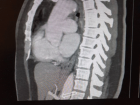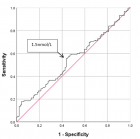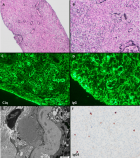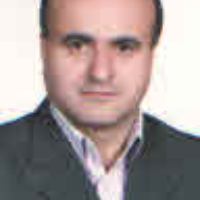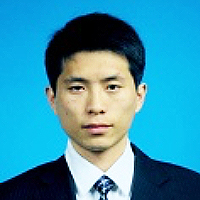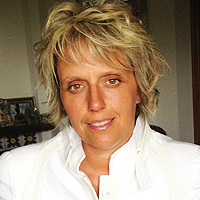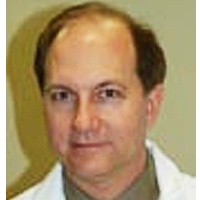Abstract
Research Article
The Femoral Head of Patients with Hip Dysplasia is not as Osteogenic as Iliac Crest Bone Location
Philippe Hernigou*, Yasuhiro Homma, Arnaud Dubory, Jacques Pariat, Damien Potage, Charles Henri Flouzat Lachaniette, Nathalie Chevallier and Helene Rouard
Published: 03 January, 2017 | Volume 1 - Issue 1 | Pages: 001-007
When Total Hip Arthroplasty (THA) is required in a patient with developmental dysplasia of the hip (DDH), bone deficiency in the acetabular roof often remains a problem. The iliac crest (IC) has long been the preferred source of autograft material, but graft harvest is associated with frequent complications and pain. Autologous bone graft can also be obtained from the femoral head (FH) for reconstruction of the acetabulum in hip arthroplasty. However, in certain challenging clinical scenarios, incorporation of the femoral head autograft appears less successful than the iliac crest autograft. The difference in potential for proliferation and osteoblastic differentiation between the two sites has still not been evaluated; therefore, it is not known how to compensate for this difference when it is present. We designed this study to evaluate the number of mesenchymal stem cells (MSCs) in both the iliac crest and femoral head of the same patient. We also determined the best operating room procedure for loading the femoral head with MSCs to achieve equivalent numbers of MSCs as in the IC. Twenty patients (8 men and 16 women) undergoing THA for DDH were enrolled in the study. The mean age was 55.5 years (range 41–65 years). Bone marrow aspirates were obtained from three depths within the femoral head and the aspirates were quantified relative to matched iliac crest aspirates that were obtained from the same patient at the same time. The cell count, progenitor cell concentration (cells/mL marrow), and progenitor cell prevalence (progenitor cells/million nucleated cells) were calculated.
Aspirates of FH marrow demonstrated less concentrations of mononuclear cells compared with matched controls from the iliac crest. Progenitor cell concentrations were consistently lower in FH aspirates compared to matched controls from the iliac crest (p = 0.05). The concentration of osteogenic progenitor cells was, on average, 40% lower in the FH aspirates than in the paired iliac crest samples (p = 0.05). However, with bone marrow aspirated from the iliac crest, we were able to load the femoral head autograft with sufficient MSCs to obtain the same number as present in an iliac crest. With concentrated bone marrow from the IC, supercharging the femoral autograft with MSCs to numbers above that present in the IC was possible in the operating room, and the number of MSCs supercharged in the femoral head was predictable.
Based on these findings we suggest that FH graft supercharged with BM-MSCs from the IC is comparable to IC graft for osseous graft supplementation especially in THA for patients with DDH.
Read Full Article HTML DOI: 10.29328/journal.jsctt.1001001 Cite this Article Read Full Article PDF
Keywords:
Femoral Head, Iliac Crest, Bone Marrow Stem Cells, Proliferation, Osteoblastic Differentiation
References
- Baba T, Shitoto K. Revision of total hip arthroplasty using the Kerboull and KT plates. Int Orthop. 2010; 34: 341-347. Ref.: https://goo.gl/qzNMKh
- Charnley J, Feagin JA. Low-friction arthroplasty in congenital subluxation of the hip. Clin Orthop Relat Res. 1973; 91: 98-113. Ref.: https://goo.gl/DxR1sN
- Delimar D, Bohacek I, Pecina M, Bicanic G. Acetabular roof reconstruction with pedicled iliac graft: ten years later. Int Orthop. 2014; 38: 199-201. Ref.: https://goo.gl/zs3gp8
- Fujiwara M, Nishimatsu H, Sano A, Misaki T. Acetabular roof reconstruction using a free vascularized fibular graft. J Reconstr Microsurg. 2006; 22: 349-352. Ref.: https://goo.gl/yzw0dU
- Gerber SD, Harris TW. Femoral head autografting to augment acetabular deficiency in patients requiring total hip replacement: a minimum five-year and an average seven-year follow-up study. J Bone Joint Surg Am. 1986; 68: 1241-1248. Ref.: https://goo.gl/4qblF5
- Caplan AI. Why are MSCs therapeutic? New data: new insight. J Pathol. 2009; 217: 318-324. Ref.: https://goo.gl/s4vtrO
- Friedenstein AJ, Petrakova KV, Kurolesova AI, Frolova GP. Heterotopic of bone marrow. Analysis of precursor cells for osteogenic and hematopoietic tissues. Transplantation. 1968; 6: 230-247. Ref.: https://goo.gl/k0buBQ
- Hernigou P, Poignard A, Beaujean F, Rouard H. Percutaneous autologous bone-marrow grafting for nonunions. Influence of the number and concentration of progenitor cells. J Bone Joint Surg Am. 2005; 87: 1430-1437. Ref.: https://goo.gl/GpMqly
- Hernigou P, Homma Y, Flouzat Lachaniette CH, Poignard A, Allain J, et al. Benefits of small volume and small syringe for bone marrow aspirations of mesenchymal stem cells. Int Orthop. 2013; 37: 2279-2287. Ref.: https://goo.gl/ddCAz4
- Chevallier N, Anagnostou F, Zilber S, Bodivit G, Maurin S, et al. Osteoblastic differentiation of human mesenchymal stem cells with platelet lysate. Biomaterials. 2010; 31: 270-278. Ref.: https://goo.gl/zaJpNx
- Hernigou P, Pariat J, Queinnec S, Homma Y, Flouzat Lachaniette CH, et al. Supercharging irradiated allografts with mesenchymal stem cells improves acetabular bone grafting in revision arthroplasty. Int Orthop. 2014; 38: 1913-1921. Ref.: https://goo.gl/Gw5wnJ
- Homma Y, Kaneko K, Hernigou P. Supercharging allografts with mesenchymal stem cells in the operating room during hip revision. Int Orthop. 2014; 38: 2033-2044. Ref.: https://goo.gl/h1zxlJ
- Gross AE, Catre MG. The use of femoral head autograft shelf reconstruction and cemented acetabular components in the dysplastic hip. Clin Orthop Relat Res. 1994; 298: 60-66. Ref.: https://goo.gl/LUAmoQ
- Hartofilakidis G, Karachalios T. Total hip arthroplasty for congenital hip disease. J Bone Joint Surg Am. 2004; 86-A: 242-250. Ref.: https://goo.gl/g6ZHU7
- Hintermann B, Morscher EW. Total hip replacement with solid autologous femoral head graft for hip dysplasia. Arch Orthop Trauma Surg. 1995; 114: 137-144. Ref.: https://goo.gl/H10X5k
- Iida H, Matsusue Y, Kawanabe K,Okumura H, Yamamuro T, et al. Cemented total hip arthroplasty with acetabular bone graft for developmental dysplasia. Long-term results and survivorship analysis. J Bone Joint Surg Br. 2000; 82: 176-184. Ref.: https://goo.gl/4D7Y3X
- Mulroy RD, Harris WH. Failure of acetabular autogenousngrafts in total hip arthroplasty. Increasing incidence: a follow-up note. J Bone Joint Surg Am. 1990; 72: 1536-1540. Ref.: https://goo.gl/sbesuJ
- Inao S, Gotoh E, Ando M. Total hip replacement using femoral neck bone to graft the dysplastic acetabulum: follow-up study of 18 patients with old congenital dislocation of the hip. J Bone Joint Surg Br. 1994; 76: 735-739. Ref.: https://goo.gl/9Bzt3B
- Hernigou P, Dubory A, Roubineau F, Homma Y, Flouzat-Lachaniette CH, et al. Allografts supercharged with bone-marrow-derived mesenchymal stem cells possess equivalent osteogenic capacity to that of autograft: a study with long-term follow-ups of human biopsies. Int Orthop. 2016; DOI 10.1007/s00264-016-3263-7. Ref.: https://goo.gl/9y3nq7
- Inao S, Matsuno T. Cemented total hip arthroplasty with autogenous acetabular bone grafting for hips with developmental dysplasia in adults: the results at a minimum of ten years. J Bone Joint Surg Br. 2000; 82: 375-377. Ref.: https://goo.gl/CEFUbb
- Kim M, Kadowaki T. High long-term survival of bulk femoral head autograft for acetabular reconstruction in cementless THA for developmental hip dysplasia. Clin Orthop Relat Res. 2010; 468: 1611-1620. Ref.: https://goo.gl/WtTmbr
- Kobayashi S, Saito N, Nawata M, Horiuchi H, Iorio R, et al. Total hip arthroplasty with bulk femoral head autograft for acetabular reconstruction in developmental dysplasia of the hip. J Bone Joint Surg Am. 2003; 85-A: 615-621. Ref.: https://goo.gl/esB22K
- Schreurs BW, Busch VJ, Welten ML, et al. Acetabular reconstruction with impaction bone-grafting and a cemented cup in patients younger than fifty years old. J Bone Joint Surg [Am]. 2004; 86-A: 2385-2392. Ref.: https://goo.gl/m4kpgh
- Van Haaren EH, Heyligers IC, Alexander FG, Wuisman PI. High rate of failure of impaction grafting in large acetabular defects. J Bone Joint Surg Br. 2007; 89: 296-300. Ref.: https://goo.gl/w0P5Pb
- Coquelin L, Fialaire-Legendre A, Roux S, Poignard A, Bierling P, et al. In vivo and in vitro comparison of three different allografts vitalized with human mesenchymal stromal cells. Tissue Eng Part A. 2012; 18: 1921-1931. Ref.: https://goo.gl/XYHiq7
- Deakin DE, Bannister GC. Graft incorporation after acetabular and femoral impaction grafting with washed irradiated allograft and autologous marrow. J Arthroplasty. 2007; 22: 89-94. Ref.: https://goo.gl/0NcnLe
- Hisatome T, Yasunaga Y, Yanada S, Tabata Y, Ikada Y, et al. Neovascularization and bone regeneration by implantation of autologous bone marrow mononuclear cells. Biomaterials. 2005; 26: 4550-4556. Ref.: https://goo.gl/td21Wl
- Kruyt MC, de Bruijn JD, Yuan H, van Blitterswijk CA, Verbout AJ, et al. Optimization of bone tissue engineering in goats: a preoperative seeding method using cryopreserved cells and localized bone formation in calcium phosphate scaffolds. Transplantation. 2004; 77: 359-365. Ref.: https://goo.gl/JmD8fI
- Kon E, Muraglia A, Corsi A, Bianco P, Marcacci M, et al. Autologous bone marrow stromal cells loaded onto porous hydroxyapatite ceramic accelerate bone repair in critical-size defects of sheep long bones. J Biomed Mater Res. 2000; 49: 328-337. Ref.: https://goo.gl/ptf3uF
- Léotot J, Lebouvier A, Hernigou P, Bierling P, Rouard H, et al. Bone-Forming Capacity and Biodistribution of Bone Marrow-Derived Stromal Cells Directly Loaded Into Scaffolds: A Novel and Easy Approach for Clinical Application of Bone Regeneration. Cell Transplant. 2015; 24: 1945-1955. Ref.: https://goo.gl/VmHJ2o
Similar Articles
Recently Viewed
-
Hypochlorous acid has emerged as a potential alternative to conventional antibiotics due to its broad-spectrum antimicrobial activityMaher M Akl*. Hypochlorous acid has emerged as a potential alternative to conventional antibiotics due to its broad-spectrum antimicrobial activity. Int J Clin Microbiol Biochem Technol. 2023: doi: 10.29328/journal.ijcmbt.1001026; 6: 001-004
-
KYAMOS Software - Mini Review on the Computer-Aided Engineering IndustryAntonis Papadakis*,Sofia Nikolaidou. KYAMOS Software - Mini Review on the Computer-Aided Engineering Industry. Int J Phys Res Appl. 2025: doi: 10.29328/journal.ijpra.1001105; 8: 010-012
-
Ischemic Stroke and Myocarditis Revealing Behçet’s Disease in a Young Adult: Diagnostic Challenges and Therapeutic PerspectivesObeidat Saleh Muhammed*,Abdallani B,Amine Z,Boucetta A,Bouziane M,Haboub M,Habbal R. Ischemic Stroke and Myocarditis Revealing Behçet’s Disease in a Young Adult: Diagnostic Challenges and Therapeutic Perspectives. J Cardiol Cardiovasc Med. 2025: doi: 10.29328/journal.jccm.1001205; 10: 016-021
-
Evolution of the Mineralocorticoid Receptor and Gender Difference in Cardiovascular PathologyAlessandro Zuccalà*. Evolution of the Mineralocorticoid Receptor and Gender Difference in Cardiovascular Pathology. J Cardiol Cardiovasc Med. 2025: doi: 10.29328/journal.jccm.1001204; 10: 008-015
-
Texture of Thin Films of Aluminum Nitride Produced by Magnetron SputteringStrunin Vladimir Ivanovich,Baranova Larisa Vasilievna*,Baisova Bibigul Tulegenovna. Texture of Thin Films of Aluminum Nitride Produced by Magnetron Sputtering. Int J Phys Res Appl. 2025: doi: 10.29328/journal.ijpra.1001106; 8: 013-016
Most Viewed
-
Evaluation of Biostimulants Based on Recovered Protein Hydrolysates from Animal By-products as Plant Growth EnhancersH Pérez-Aguilar*, M Lacruz-Asaro, F Arán-Ais. Evaluation of Biostimulants Based on Recovered Protein Hydrolysates from Animal By-products as Plant Growth Enhancers. J Plant Sci Phytopathol. 2023 doi: 10.29328/journal.jpsp.1001104; 7: 042-047
-
Sinonasal Myxoma Extending into the Orbit in a 4-Year Old: A Case PresentationJulian A Purrinos*, Ramzi Younis. Sinonasal Myxoma Extending into the Orbit in a 4-Year Old: A Case Presentation. Arch Case Rep. 2024 doi: 10.29328/journal.acr.1001099; 8: 075-077
-
Feasibility study of magnetic sensing for detecting single-neuron action potentialsDenis Tonini,Kai Wu,Renata Saha,Jian-Ping Wang*. Feasibility study of magnetic sensing for detecting single-neuron action potentials. Ann Biomed Sci Eng. 2022 doi: 10.29328/journal.abse.1001018; 6: 019-029
-
Pediatric Dysgerminoma: Unveiling a Rare Ovarian TumorFaten Limaiem*, Khalil Saffar, Ahmed Halouani. Pediatric Dysgerminoma: Unveiling a Rare Ovarian Tumor. Arch Case Rep. 2024 doi: 10.29328/journal.acr.1001087; 8: 010-013
-
Physical activity can change the physiological and psychological circumstances during COVID-19 pandemic: A narrative reviewKhashayar Maroufi*. Physical activity can change the physiological and psychological circumstances during COVID-19 pandemic: A narrative review. J Sports Med Ther. 2021 doi: 10.29328/journal.jsmt.1001051; 6: 001-007

HSPI: We're glad you're here. Please click "create a new Query" if you are a new visitor to our website and need further information from us.
If you are already a member of our network and need to keep track of any developments regarding a question you have already submitted, click "take me to my Query."






